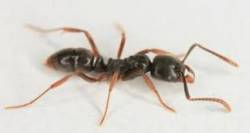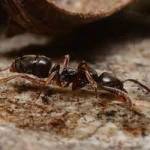Deadly Ants In The United States
Asian Needle Ant: A Growing Threat to Biodiversity and Human Health


The Asian needle ant is a type of ant that comes from Asia, but has also been found in some parts of the United States. It is an invasive species that can harm the environment and people. It likes to live in dark and damp places, like under rocks or logs. It has a sting that can cause pain and allergic reactions in some people.
If you see these ants in your home or yard, you should try to get rid of them by using baits or pesticides, or by calling a professional pest control service. Here are some sources where you can learn more about the Asian needle ant:
– [Asian Needle Ant | NC State Extension](https://entomology.ces.ncsu.edu/asian-needle-ant/)
– [Brachyponera chinensis – Wikipedia](https://en.wikipedia.org/wiki/Brachyponera_chinensis)
– [Asian Needle Ant | An Invasive Stinging Ant – US Forest Service](https://www.srs.fs.usda.gov/pubs/su/su_srs143.pdf)